Transtherm Bastide Technical Manual
- Category
- Wine coolers
- Type
- Technical Manual

MODE D’EMPLOI
TECHNICAL MANUAL
BEDIENUNGSANLEITUNG
MODO DE EMPLEO
GEBRUIKSAANWIJZING
ISTRUZIONI PER L’USO
Loft
Villa
Bastide
Gamme-Range-Aufbewahrungsserie-Gama-Gamma
Elégance
Caves à vin
Wine cabinets
Weinklimaschränke
Armarios para vinos
Wijnkasten
Armadi climatizzati per vini

P 2
Welcome
You have just purchased an TRANSTHERM product – thank you for your custom. We take particular care in
manufacturing our products in terms of their design, ergonomics and ease of use.
We hope that you will be completely satisfied with this product.
Please note
The information contained in this document may be changed without warning.
Photos are not contractually binding.
TRANSTHERM offers no guarantee for this product when it is used for purposes other than those for which it
was designed.
TRANSTHERM shall not be held responsible for any errors contained in this manual or for any damage linked to
or resulting from the supply, performance or use of this appliance.
This document contains original information, which is protected by copyright. All rights are reserved.
Photocopying, reproducing or translating this document, whether partially or completely, is strictly forbidden,
without TRANSTHERM’s prior written consent.
This appliance is intended solely for storing wine.
It is not designed to be used by people (including children) with reduced mental, sensorial or physical abilities,
or by people who have no experience or knowledge, unless they have first received instructions on how to use
the machine or are supervised by a person responsible for their safety.
Children must be supervised to ensure that they do not play with the appliance.
If the power lead is damaged, it must be replaced by a special cable or unit available from the manufacturer or
its customer service department.
WARNING:
-Ensure that the air vents in the appliance’s cavity and the flush-fitting structure are unobstructed.
- Do not use mechanical devices or other means to speed up the defrosting process other than those recom-
mended by the manufacturer.
- Do not damage the refrigeration circuit.
- Do not use electrical appliances inside the wine storage compartment, unless they have been recommended
by the manufacturer.
- Do not store in this appliance explosive substances such as aerosols containing flammable propellant gas. This
appliance is intended for domestic and similar applications such as:
- kitchenettes reserved for staff of shops, offices and other professional environments;
- gites and use by guests of hotels, motels and other environments which are residential in nature
- hotel rooms;
- the food service industry and other similar applications except for retail sale.
TRANSTHERM
24, rue Francis de Pressensé - 69628 Villeurbanne cedex - France

GB
English - P 3
Contents
Description of your wine cabinet ..................................................... P 4
Power supply .................................................................................... P 5
Installing your wine cabinet .......................................................... P 5/6
Layout and loading recommendations ......................................... P 7/8
Commissioning and temperature settings .................................. P 9/10
Important wine information ............................................................ P 10
Wine service temperatures............................................................. P 11
Everyday wine cabinet maintenance .............................................. P 12
Operating anomalies ...................................................................... P 13
Energy and technical features ........................................................ P 14
Frequently asked question ......................................................... P15/16
Protecting the environment............................................................. P17

P 4
Description of your wine cabinet
Cabinet body
Hinge
Glass door or solid door (depending
on model)
Storage shelf (type version) or
universal sliding shef
Setting strip
Lock
Adjustables feet (4)
Thermodynamic pump orifice
Maker’s label
Rack shelf
1
3
2
4
6
7
9
1
3
2
4
9
8
10
7
5
8
6
5
10

GB
English - P 5
Power supply
For your personal safety, the wine cabinet should be properly earthed. Make sure
that the plug is earthed and that the installation's circuit is protected by a 30 mA*
fuse. *not applied to certain countries
Any intervention should be carried out by a qualified electrician.
Installing your wine cabinet
When unpacking your cabinet, make sure that there are no traces of
impact or deformation and that there are no surface defects.
Carefully remove all of the protections and adhesive strips from the
packaging around your wine cabinet.
Open the door and make sure all components are intact.
Release the electrical lead.
Move your cabinet to its final location.
The place you have selected for your cabinet should:
- Be unencumbered and well ventilated,
- Enable a minimum 10 cm space between the wall and the back of the cabinet,
- Be well away from any heat source,
- Not be too damp (laundry, pantry, bathroom, etc.),
- Have a solid and flat floor,
- Have a standard and accessible electricity supply (standard socket to
country standards, linked to ground with differential trip),
- It is NOT recommended to use a multi-socket or extension lead.
ecommandation
important
stuce
Trick
ecommendation
ecommandation
important
stuce
Trick
ecommendation

P 6
Layout and loading recommendations
All shelves can be used as storage, sliding or presentation shelves. Your
cabinet’s shelves have 13 recesses allowing you to store your bottles in
complete safety.
Storage rack
To install bottles on a storage shelf:
- Insert the shelf at the desired position.
- Place a wooden locking pin in each of the 2 holes located on the right
and left side of the upper face approximately 15 cm to the front of the shelf
(see diagram): these pins secure the shelf to the thermoformed wall and
prevent any inappropriate movement.
ecommandation
important
stuce
Trick
ecommendation
Installing the handle
Installing the handle of your wine cabinet is carried out in the following
manner:
- Introduce the two spacers (B) into the
holes on the inside panel of the door.
- Add the two washers (C)
- Using a screwdriver, secure the handle
(A) with the two screws (D).
- Clip the two knobs (E) onto the washers.
As a security
measure, the lock
works on a
double movement
system. The key
should be pushed
inward and
turned at the
same time.
In order for you to level off your cabinet as easily as possible, it is
equipped with 4 adjustable feet. However, we do recommend that
you tighten the back feet to the maximum and use the front feet
to create a level (a spirit level is recommended for this operation).
WAIT 48 HOURS BEFORE PLUGGING IN THE CABINET
Should you need to move your cabinet, never tilt it more than 45° and
always sideways, on the side that the electrical cable comes out (right
hand side when looking at the cabinet).

GB
English - P 7
Configuration of a shelf in presentation layout:
To install bottles on a presentation shelf:
Insert the shelf at the desired position.
Place a wooden locking pin in each of the 2 holes located on the right and
left side of the upper face approximately 15 cm from the front of the shelf
(see diagram): these pins secure the shelf to the thermoformed wall and
prevent any inappropriate movement.
- Start by placing the bottles in each recess on the back row, with the base
of the bottle towards the back. (6 traditional Bordeaux type bottles).
- Continue stacking the bottles on the back row (7 + 6 + 7 + 6 = 26 traditional
Bordeaux type bottles), ensuring that none of the bottles touches the back
wall.
- To present your bottles, place them in a vertical position on the front of
the shelf (maximum capacity: 6 traditional Bordeaux type bottles).
When in presentation layout, the shelf has a maximum capacity of 32 (26+6)
traditional Bordeaux type bottles.
- Start by placing the bottles in each recess on the back row, with the base
of the bottle towards the back.
- Continue with the front row, placing the bottles in the opposite direction.
- Continue stacking the bottles, ensuring that none of the bottles touches
the back wall.
A storage shelf can hold a maximum of 6 rows of 13 bottles, or 78 traditional
Bordeaux type bottles (100 kg).
Shelf in sliding version configuration:
To place bottles on a sliding shelf, carry out the following:
- Install the shelf in the selected location.
- Place a wooden locking pin in each of the two holes located on the
right and left of the upper face approximately 4cm to the rear of
the shelf
(see diagram)
: when the shelf is slid forwards, these pins
stop it from sliding completely out of the cabinet.
- Start by placing the bottles in the rear recesses with the base of the
bottles towards the back.
- Continue by placing the bottles in the front recesses facing them in
the opposite direction.

P 8
Commissioning and Temperatures settings
1 • Commissioning
-Once you have waited 48 hours, connect your cabinet to the
mains, having checked that there is power to the socket (check fuses and
their amperage, the state of the trip, and if necessary try out another
electrical appliance to verify the supply).
- Once connected to the mains, make sure that the Off/On switch, on
the right of your cabinet’s control panel, is set at "On" (I).
You should remember that if you do not have enough bottles to fill
your wine cabinet, it is better to distribute the load over all of the
shelves available, so as to avoid "all on top" or "all below" type loads.
ecommandation
important
stuce
Trick
ecommendation
The shelves all have a label slot, designed to receive the pre-cut cards
delivered with your cabinet, thus helping you to identify the position
of your favourite wines at a glance.
ecommandation
important
stuce
Trick
ecommendation
Rearrange the locking pins when changing from sliding shelf to storage or
presentation shelf.
-A sliding shelf can only hold one layer of bottles (maximum of 13
"Tradition" Bordeaux bottles).
- In order to enjoy optimum accessibility when setting up the cabinet in a
mixed layout, we recommend that shelves destined to be used as sliding
shelves are located in the middle section of the cabinet.
NEVER SLIDE MORE THAN ONE SHELF.
On/Off button

GB
English - P 9
2 • Temperature settings
Description du tableau de commande
• Temperature display: displays the actual temperature inside your wine
cabinet. It is therefore
necessary to wait before your new setting takes effect.
• Simply press and hold down SET for a few seconds to see the tempe-
rature setting.
• Buttons ( //SET): allow you to select the desired temperature inside
the cabinet.
• Standby button ( ): allows you to activate the cabinet and put it on
standby.
3 • Commissioning the control panel
By default, the control is in the on position. To put the cabinet on standby,
push and hold down the button ( ) for several seconds.
The display switches between the internal temperature and the OFF
display (the cabinet is no longer operating, only the display is active).
To reactivate the cabinet, press and hold down the button ( ) for several
seconds until just the temperature is displayed.
4 • To set the temperature of your wine cabinet
The temperature of your wine cabinet is set entirely from the control panel.
Press and hold down the SET button for a few seconds until the tempera-
ture setting flashes.
• Set the desired temperature using the and buttons.
• Confirm your programming by pressing the SET button. If you do not
confirm your setting with this key, your modification will not be registered.
5 • Status lights:
Compressor 1: indicates that the compressor is operating. When this
flashes, it means that the compressor is going to start up in a few minutes
(technical delay).
Defrosting cycle 2: indicates that an automatic defrosting cycle is underway.
Heater 3: indicates that the heater is operating.
Alarm 4: informs you that there is an abnormally high or low temperature
1
2
3
4

P 10
Important wine information
Your TRANSTHERM cabinet has been designed to guarantee the
optimum conditions for storing and/or serving your wine
Wine is a highly complex product, requiring long and gentle develop-
ment and needs specific conditions in which to reach its full potential.
All wine is stored at the same temperature, only the temperatures for
serving and wine tasting can vary depending on the type of wine (see the
table)
This being the case and just like the natural caves used by wine produ-
cers, it is not the exact temperature that is important, but its constancy.
In other words, as long as the temperature of your cabinet is between
50 and 57°F, your wine will be stored in perfect conditions if the
temperature is not subject to any significant fluctuation
However, it is advisable to be especially careful concerning the values
shown on your wine cabinet's hygrometer, which, due to its location in
the wine cellar will always have tendency to display a lower humidity
level.
IRRESPECTIVE OF THE CAUSE, IF YOU NOTICE EITHER ABNOR-
MAL TEMPERATURE OR HUMIDITY LEVELS INSIDE YOUR
CABINET, BE REASSURED THAT ONLY LONG EXPOSURE TO
THESE ABNORMAL CONDITIONS CAN HAVE A DETRIMENTAL
EFFECT ON YOUR WINES.
inside the wine cabinet.
NB: If you have loaded your cabinet with a large number of bottles, it can
take several hours for your wine cabinet’s temperature to stabilise. The
warning light may thenappear. Wait a while then check again. If the alarm
warning light does not disappear, contact your retailer.
The recommended setting range for storing wine is 50°F/10°C - 57°F/14°C.
The default setting is 54°F/12 °C (ideal maturing temperature).
However, the temperature may also be set between 43°F/6°C and
64°F/18°C.
Your wine cabinet can be placed in a room with a temperature of 32°F/0°C
- 95°F/35°C.
When commissioning your cabinet, or after significant changes to the
temperature setting, it can take several hours for your wine cabinet to stabi-
lize and display the new desired temperature.
Wait a few days. If the temperature does not stabilise, contact your retailer.

GB
English - P 11
Wine service temperatures
(provided as an indicator only)
ecommandation
important
stuce
Trick
ecommendation
French wines
Alsace 10°C
Beaujolais 13°C
Sweet white Bordeaux 6°C
Dry white Bordeaux 8°C
Red Bordeaux 17°C
White Burgundy 11°C
Red Burgundy 18°C
Champagne 6°C
Jura 10°C
Languedoc-Roussillon 13°C
Provence Rosé 12°C
Savoie 9°C
Dry White Loire Wines 10°C
Sweet White Loire Wines 7°C
Red Loire Wines 14°C
Rhône wines 15°C
Sweet South-West wines 7°C
Red South West Wines 15°C
Australian wines
Cabernet franc 16°C
Cabernet sauvignon 17°C
Chardonnay 10°C
Merlot 17°C
Small grape Muscat 6°C
Pinot noir 15°C
White Sauvignon 8°C
Semillon 8°C
Shiraz 18°C
Verdhelo 7°C
Other wines
Californian 16°C
Chilean 15°C
Spanish 17°C
Italian 16°C

P 12
Everyday care of your wine cabinet
Your TRANSTHERM cabinet is a simple tried and tested item of equip-
ment. The following few operations enable you to obtain optimum
operation and an extended life cycle.
1 -Regularly remove dust (once a year) from the condenser (black
metal grill fastened to the back of your wine cabinet).
2 -Completely clean the inside of your wine cabinet once a year, taking
care to ensure that you have unplugged and unloaded it (use water
and a non caustic cleaning product, and make sure to rinse well).
Hygrometry
You cabinet is equipped with an exclusive TRANSTHERM system
enabling the creation, inside your wine cabinet, of the correct humidity
level required to perfectly seal the corks in your bottles
This system uses the water retrieved from condensation, which is then
recycled. Should the humidity level in your cabinet ever reach critical
level (less than 50%), just add one or two glasses of water to the lower
tray of your cabinet.
The long life of your wine cabinet depends on regular monitoring,
especially of anything that may appear abnormal, and informing us
of any anomalies found.
ecommandation
important
stuce
Trick
ecommendation
N

GB
English - P 13
Operating anomalies
When starting up
The compressor will not operate :
Ensure that there is power to the electrical supply plug by connecting
another electrical appliance to it.
The compressor will not turn off:
1- Place your hand on the condenser (metal grill located along the
exterior wall behind your cabinet). If the condenser is cold, get in touch
with your retailer.
2- If the condenser is hot, set the temperature of your cabinet at
18°C, the highest temperature setting.
AL = Low temperature warning
AH = High temperature warning
Any intervention on the cold circuit should be performed by a refrige-
ration technician, who should carry out an inspection of the circuit
sealing system.
In the same way, any intervention on the electrical circuit should be
performed by an electrician.
The power cable is fitted with an earthed plug standard to the country
of consignment. It is essential that, for your safety, the electrical supply
to the cabinet be earthed. Please have the suitability of the socket
checked by a qualified electrician, who will make sure that it is properly
earthed and, if necessary, repair it.
If the power lead is damaged, it must be replaced by the manufactu-
rer, its customer service or similarly qualified persons, for safety
reasons.
ONLY A QUALIFIED ELECTRICIAN SHOULD MAKE ANY REPAIRS
OR INSPECTIONS TO YOUR ELECTRICAL SUPPLY.
THE USE OF GLASS DOORS HAS AN EFFECT ON PERFORMANCE.
ecommandation
important
stuce
Trick
ecommendation

P 14
Energy and technical features
* Weight without racks.
** Measured with an exterior temperature of approximately 25°C.
*** Depending on country this may vary. For the specific values for your equipment item, please consult the maker’s
label on it.
Reference
Energy
efficiency
rating
Annual energy
consumption AEc*
(Kwh/year)
Useful
volume
(liters)
Temperature of
the other
compartments**
Acoustic
emissions
(dB(A))
LOFT solid door E 355 326 -38
LOFT glass door G 475 326 -38
VILLA solid door E 365 455 -38
VILLA glass door G 511 455 -38
BASTIDE solid door E 402 575 -38
BASTIDE glass door G 548 575 -38
Data relating to energy consumption
Model Temperatures Height
(mm)
Width
(mm)
Depth
(mm)
Weight*
(kg)
Setting
precision
Loft 11110 to 1130 680 680 61+/-2,7°F
Villa 11460 to 1480 680 680 71 +/-2,7°F
Bastide 11810 to 1830 680 680 82 +/-2,7°F
Model Electrical
power** (W)
Voltage
(V)***
Frequency
(Hz)***
Recommended temperature range (°F)
solid door glass door
Loft 100 230 50 32-95 32-86
Villa 105 230 50 32-95 32-86
Bastide 110 230 50 32-95 32-86
Power consumption calculation based on the result obtained over 24 hrs in standard test conditions. Actual power
consumption depends on the appliance’s location and operating conditions.
This appliance is intended exclusively for wine storage.
Category of all models: 2
Climate class: Our appliances are designed for use at an ambient temperature of between 10°C and 32°C (50°F and
90°F) (Class SN). Nevertheless, refer to the technical properties tables above for the optimal performance levels of
your product.
These appliances cannot be built-in.
** red serving temperature
Your product complies with the following standards:
1 SAFETY DIRECTIVE 2006/95/EC
Standards EN60335-1: Version 5 - 2010 +A1 + A2 + A11 + A12 + A13
EN60335-2-24: Version 7 - 2010 + A1 + A2 + A11
Standards
2 EMC DIRECTIVE 2004/108/EC
Standard EN55014-1/2
3 ENVIRONMENT
Directive 2010/30/EU
Regulation 1060/2010

GB
English - P 15
Frequently asked questions
I have noticed differences in temperature between the
upper and lower section of my cabinet.
- Refer to the setting instructions.
- Check that none of the bottles is touching the back of the appliance.
Please note, however, that only the temperature of the air varies.
Liquids have a high degree of thermal inertia which prevents the wine
from changing temperature.
As in a natural cellar, a deviation in temperature of about 2 to 3°C is
considered normal owing to convection phenomena. The important
factor for wine is that at any given moment, the temperature is
constant.
I have noticed frost on the back of my cabinet.
In a Transtherm wine cabinet, frost may appear in the upper section of
the back wall. It is coldest when the compressor starts up. This is there-
fore the time when the frost will be most noticeable – this is comple-
tely normal.
When the compressor stops the frost turns into water droplets.
If frost accumulates to the point of producing ice (because the bottles
are touching the back wall) unplug the machine, wait for it to defrost
then arrange the bottles correctly and plug it back in.
If, in spite of these precautions, ice (and not frost) develops again, it is
essential that you contact your retailer’s after-sales service.
What are the risks for my wine in case of extended power
outage?
The Transtherm cabinet’s insulation protects against extreme changes
in temperature; thermal inertia linked to the volume of bottles consi-
derably slows down changes in temperature. Should a power outage
occur, the temperature will be restored very slowly in order to protect
the wine from thermal shock. It is recommended that you avoid
opening the cabinet during this time. Wine kept at an ambient tempe-
rature for a short period will not deteriorate.

P 16
My cabinet makes no noise.
The compressor fitted in Transtherm cabinets is very quiet (38dB).
Depending on the ambient temperature of the room and the temperature
of the cabinet, the compressor may have stopped according to the
setting.
The level of humidity in my cabinet is too low.
Only a level of humidity which is very low over a long period of time is
harmful (< than 50%)
Whilst the compressor is in operation a drop in humidity may occur,
because of the transformation of humidity into frost. This drying of the
air is only temporary and has no effect on the corks.
In case of persistent low humidity:
- Pour the equivalent of a glass of water into the compartment which
collects condensation water (at the back of the appliance), if it is acces-
sible, or into the bottom of the rear of the cabinet on the left hand side
(condensation water evacuation pipe).
Where can I obtain additional shelves?
Depending on the model of your appliance, you can add shelves
according to the desired layout.
The maximum number of shelves for each model is:
Loft: 6 shelves
Villa: 10 shelves
Bastide: 13 shelves
You can obtain additional shelves from your TRANSTHERM retailer.

GB
English - P 17
Protecting the Environment
Disposing of packaging:
The packaging used by Transtherm is manufactured
using recyclable materials.
After unpacking your cabinet, take the packaging
to a refuse collection point. For the most part, it
will be recycled.
In accordance with legal provisions regarding protecting and
caring for the environment, your wine cabinet does not feature
any CFCs or HCFCs.
To save energy:
- Install your cabinet in an appropriate place (see page 5) and
within the recommended temperature ranges.
- Keep the door open for as short a time as possible.
- Ensure that the door seal is in good condition and check that
it is not damaged. If it is damaged, contact your Transtherm
retailer.
N.B.: Caring for the environment: when replacing your wine
cabinet, consult the local municipal refuse department in order
to observe the appropriate recycling procedure.
For refrigerant gases, substances and some parts in the wine
cabinets, Transtherm uses recyclable materials which require a
special packaging disposal procedure to be used.
Condemn the lock so that children cannot accidentally shut
themselves inside the cabinet.
Place unusable appliances out of use by unplugging them and
cutting the power supply.
-
 1
1
-
 2
2
-
 3
3
-
 4
4
-
 5
5
-
 6
6
-
 7
7
-
 8
8
-
 9
9
-
 10
10
-
 11
11
-
 12
12
-
 13
13
-
 14
14
-
 15
15
-
 16
16
-
 17
17
Transtherm Bastide Technical Manual
- Category
- Wine coolers
- Type
- Technical Manual
Ask a question and I''ll find the answer in the document
Finding information in a document is now easier with AI
Other documents
-
Fisher & Paykel RF356RDWX1 User guide
-
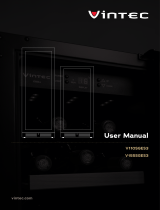 Vintec V155SGES3 User manual
Vintec V155SGES3 User manual
-
Vintec V40SGEBK User manual
-
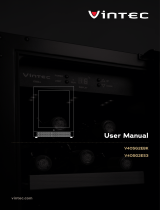 Vintec V40SG2ES3 User manual
Vintec V40SG2ES3 User manual
-
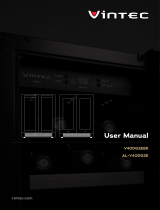 Vintec AL-V40DG2E User manual
Vintec AL-V40DG2E User manual
-
KitchenAid KRVC - 1810 I Owner's manual
-
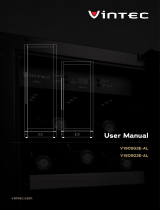 Vintec V190SG2E-AL User manual
Vintec V190SG2E-AL User manual
-
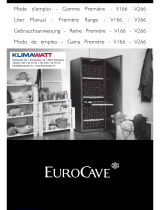 Klimawatt Eurocave Premire V166 User manual
Klimawatt Eurocave Premire V166 User manual
-
ARTEVINO OXYVD7WCOUS User manual
-
Eurocave Compact 59 User manual





















